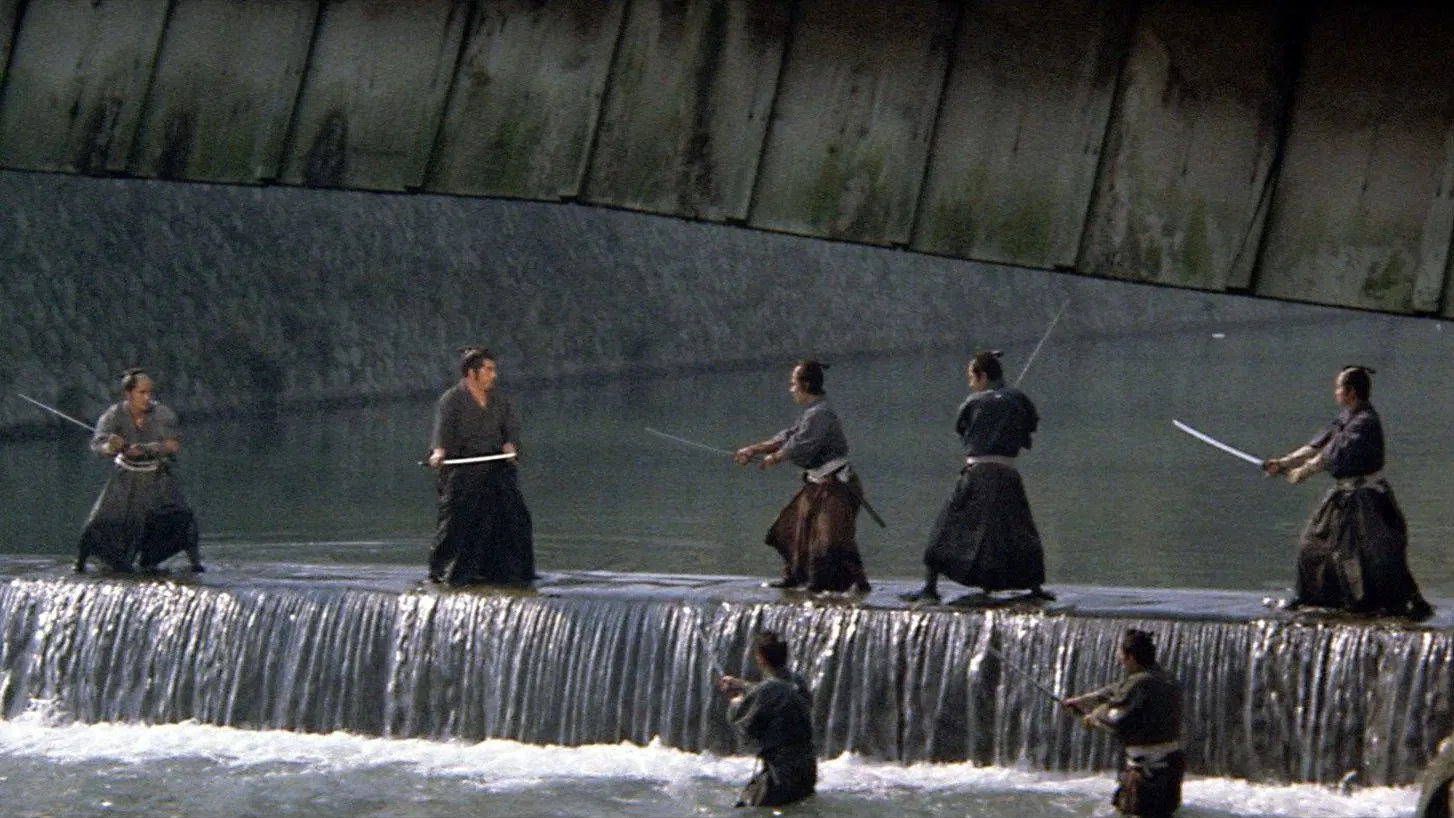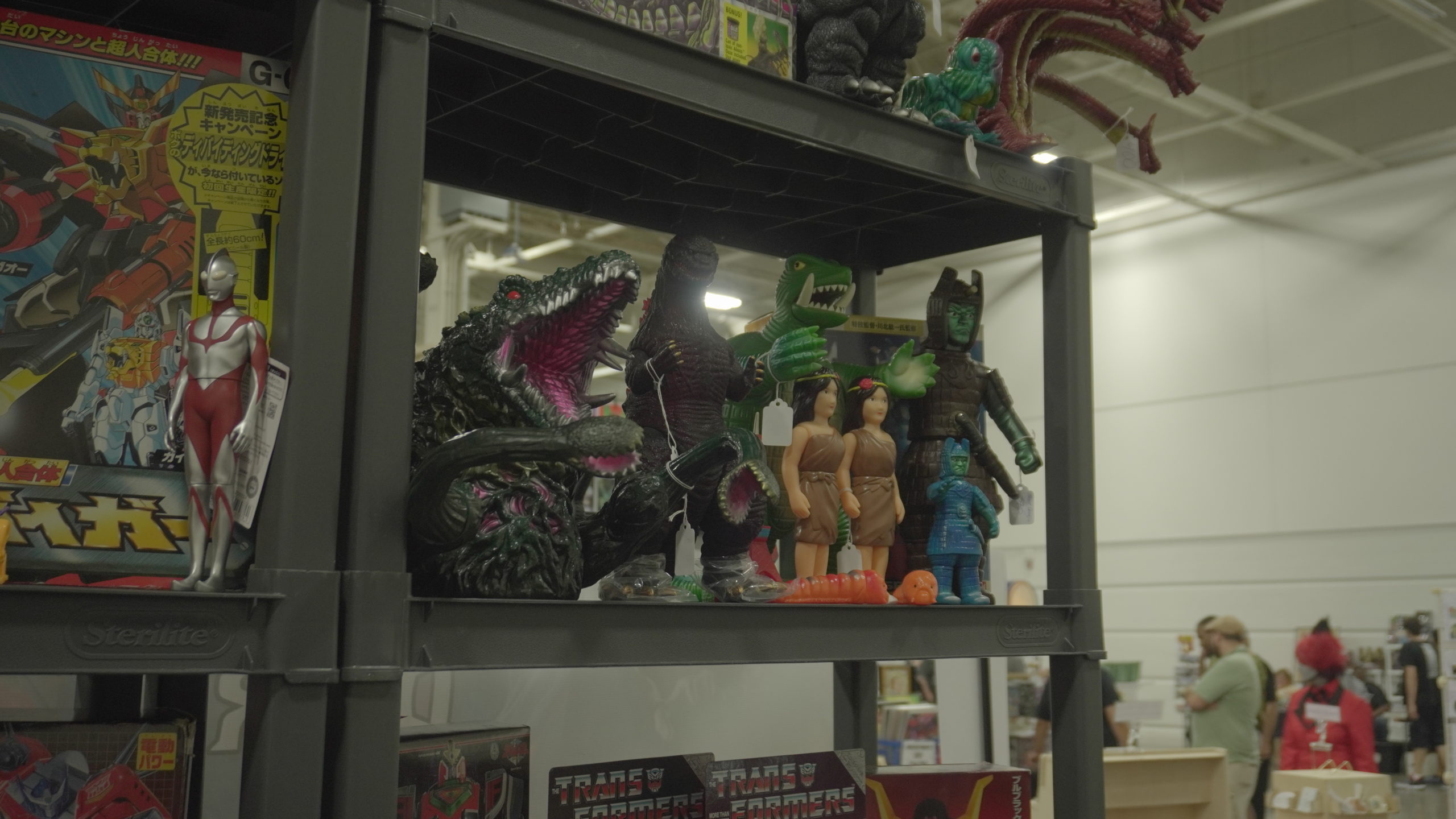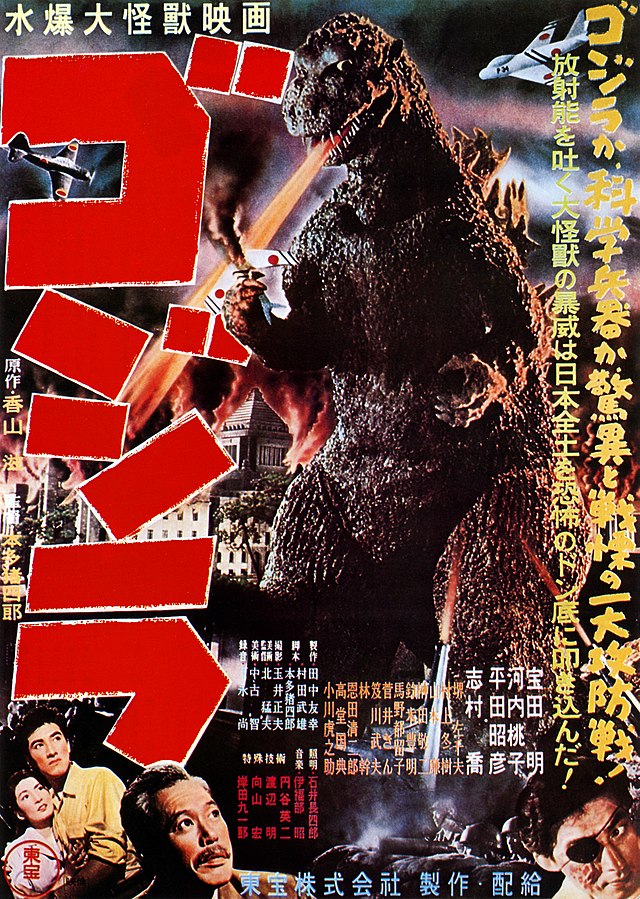Lone Wolf and Cub is one of the most influential series to have ever been made both in cinema and manga. Some of the most famous examples of film are Quentin Tarantino’s catalogue, which uses the same type of gore and shot structure as Lone Wolf and Cub, while the manga inspired Frank Miller, especially his Sin City and Ronin comics. To say that this film transcended its homeland and has inspired two of America’s most iconic storytellers would probably be an understatement. While the manga has been released in the West before, in December of 2025 it will be getting a new hardcover edition, collecting the first three volumes as well as being the most authentic publication of the story in the west so far, thanks to Dark Horse Comics. To celebrate the manga’s triumphant return in a big way, I want to look at the films adapted from them over the course of the next few months leading to the release. So, let’s travel to 1970’s Japan together with Lone Wolf and Cub!
To start off, I want to warn people that this movie is both incredibly violent, as well as features sex, both consensual and nonconsensual. I won’t be detailing these scenes in the review, but be wary they are in the film itself if you do choose to watch it.
For those who don’t know, let me explain a little about what Lone Wolf and Cub is! The manga was originally published in September 1970 and ran until April 1976. The idea came to mangaka Kazuo Koike from the story of Sigurd, but this time changing it up by making the main protagonist’s one weakness is his child instead of a body part. LW&C is by far one of the most influential manga ever written, having inspired an entire genre of a lone warrior parent traveling with their child such as the game God of War (2018), the show The Mandalorian, and the film Logan. The manga would also spawn four plays, a television series, and of course the films we are going to be covering here on Kaiju United over the next few months!

© グループ・ゼロ (Group Zero)
Within just a few months of the first publication of the series, it was being pitched as a made for television movie. Tetsuya Watari (known for his role as Tetsuya in Tokyo Drifter and Shintaro Kazama in the Yakuza video game series) was the first person eyed to play the protagonist Ogami Ittō but he fell ill. Who could possibly live up to the presence that Ogami oozes on every panel if not Tetsuya Watari? Who has that strength and charisma to be an unflinching samurai? That’s when Shintaro Katsu was offered the part. Katsu is most famous as the popular action character Zatoichi, whom he plays in all 26 original movies. For Kaiju and Tokusatsu fans, he features in the classic Daiei fantasy movie The Whale God! Unfortunately, he had to turn the role down due to scheduling conflicts with Zatoichi and other films, but he bought the rights to the manga anyway and ended up producing all six Lone Wolf and Cub films! Katsu’s older brother Tomisaburō Wakayama begged to play the character of Ogami Ittō but he didn’t want his brother to give him the part, he needed to prove to the writer himself he was worthy! Wakayama went to Kazuo Koike’s house and showed him what he could do, and won the role of a lifetime! Wakayama was a perfect fit for the role and the film became enough of a success to bring in five whole sequels! The first movie, titled Sword of Vengeance, would be released in 1972, merely two years after the spectacular release of the manga!

©Toho Co., Ltd.
The film opens with a beheading of a young lord (about age 5) for his family betraying the Shogunate of Japan, and unfortunately it’s Ogami Ittō who has to do the deed. This whole scene is handled with a lot of care. The tension building up to the execution is amazingly well done. A slow shot of the sword being cleaned, spooky stringed instruments and odd editing almost makes this scene feel like it’s straight out of a horror film. The scene oozes with style and its brash editing, right from the start, can show the influences Tarantino would pick up on for his filmography. This simple start sets up who the character of Ogami Ittō is as an executioner to the shogunate and how dedicated he is to his honor and job, even killing a child to prove his loyalty.
After this the opening credits roll and the music is almost like a rock song done with Japanese instruments from feudal Japan. It really captures how this is a very contemporary story done in this setting. The tone is beautifully set and there is a beautiful shot of Ogami walking with his son on a white path between tumultuous water and raging fire. Then the film truly opens, with Ogami Ittō wandering with his son as a loner with no honor or status. What could have happened to get him here? The film answers this as it progresses, telling its story non-linearly and keeping the audience on edge. It’s established that he won’t stay in the Shogunate, but the audience isn’t given a “why” just yet. This scene is spectacular at showing what has become of Ogami after all this time. He has himself and his son for hire, and even helps a young woman with a dead child to get some of her maternal instincts out of her system on his son Daigoro. Speaking of Daigoro, he doesn’t get a lot to do in this movie other than to serve as Ittō’s weakness, but somehow the film does an amazing job at getting sympathy for him. This scene ends beautifully with the rain transitioning us back to Ogami’s days in the shogunate.

Finally, we get to experience how our Lone Wolf fell from grace. It’s very striking to see Ogami in this scene, he is clean and very well put together, nothing like the disheveled and dirty man we saw in the previous scene with his son. Ogami explains the strength he sees in his son, and that he will raise him to be strong in the face of unreasonable situations. He wants his son to have a great life, and he believes he can provide it. We already know things go wrong, but it feels all the more real having this flashback sequence. This is when he and his family get attacked by a group of ninjas, and this is where, sadly, Ogami’s wife is murdered and the destiny of this man and his son takes shape. Ogami fights those who remain to death and then exclaims “Who did this? Damn. I will hunt them to the ends of the earth!” as he places his baby son next to his dead wife.
This whole scenario is done once again, almost like a horror film. The tension is palpable and the dark lighting really highlights the dark road Ogami is about to go down. The Yagyu clan shows up at Ogami’s house shortly after this, stating that three samurai of the lord killed during the intro committed Sepukku with a “vow to punish evil” where they accuse Ogami of defying the shogunate. The Yagyu clan ends up confirming their suspicions though, as the ninja raid before placed a fake seal of the Shogunate in Ogami’s temple. Ogami however, fights against his would be persecutors claiming it to be fraudulent, when he realizes this is all a set up to steal his place as executioner. This battle is very “Kill Bill” in nature, it’s gory and intense with a ton of men against one lone wolf. The patriarch of the Yagyu clan makes an appearance and he looks like he could have been right out of “Kill Bill” as well, the influences are very easy to see. He reveals that the Yagyu has the full power of the shogunate and is in control of everything in Japan. We get the shot of Ogami Ittō again between the raging fire and tumultuous river, where it’s now revealed he will walk the white path of righteousness between his foes.
From here the film switches back and forth between the present and the past that builds up to the film’s climax. I think the film is best watched fresh, so I won’t be spoiling it further, but I will give some brief comments on some of its best scenes. My favorite scene in the whole film is when Ogami decides to bring his son on his quest for revenge. The scene is set with Ogami in white robes preparing to perform seppuku, he holds a ball in one hand and his sword in the other. He offers his son a choice, choose the sword and join his father on a trail of vengeance and violence, or pick the ball and be reunited with his mother in the afterlife. When the boy chooses the sword, Ogami gives a chilling speech. I think it is best experienced in the film itself so I’ll let you discover that line yourself! This whole scene emphasizes the weight of bringing a child on such a journey but also showcases the love this man has for his child.

Another great scene is when Ogami surprise attacks his would be executors as they try to make him commit Seppuku. He wears a white robe, and as the scene progresses it gets more and more red before he finally discards it and reveals black robes underneath, signifying his path of darkness ahead. This scene feels very reminiscent of Luke Skywalker in Return of the Jedi having black robes instead of his usual lighter attire. I wouldn’t be surprised if George Lucas was inspired by this, as he was with many Japanese films.
The final scene I want to very briefly discuss is the climax. Ogami is hired to take out some samurai and bandits plotting to overthrow a town. When he gets there he loses his sword and he is forced to do things he doesn’t want to. After a lot of down time and build up (that it’s hard to believe this 83 minute movie manages to pull off) we get Ogami exacting his personal revenge and his job duties at once. He doesn’t have his sword though so we get to see how truly crafty he is, even using his son’s carriage as a weapon. This scene perfectly shows off his weakness, and his strength to overcome it. He loves his son and no matter the danger he is put in, Ogami WILL save him.
Lone Wolf and Cub: Sword of Vengeance is a truly special movie. It’s dark and brooding, but hopeful and light all at once. It tells a revenge story in such a fantastic way, both glamorizing and showing the depths of despair a tale of revenge should invoke. It isn’t for everybody, with its brutal violence and non-consensual sex that can leave a bad impression on someone, but if you can get past that it is completely worth a watch. I hope I’ve inspired you to view the film without giving away too much! The pacing is incredible, delicately balancing some breathing room to get to know our heroes, while also quickly getting to the action we’re waiting for. This is one fun 83 minutes! If you’d like to seek these films out, all of the Lone Wolf and Cub films are available to stream officially on HBO Max and The Criterion Channel, and have been released on physical media via The Criterion Collection.





